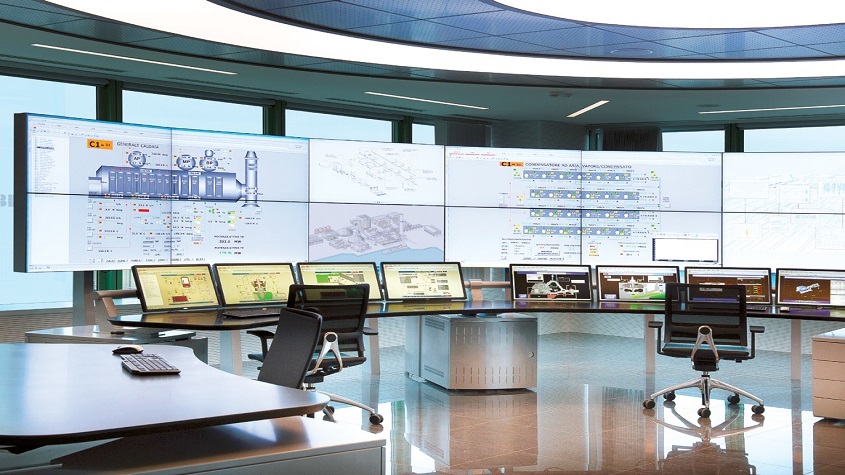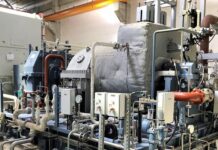How do you protect your investment in an automation system over the 50-year life cycle of the plant, while continuously upgrading the system with the latest technologies at the lowest possible risk and cost?
The cost of a new power plant is immense. According to the US Energy Information Administration (EIA), a new power generation facility using the most basic coal-fired technology will cost around $3 million per megawatt to build. For natural gas it is less expensive at around $900,000 per megawatt, and for nuclear considerably costlier at about$5.5 million.The plant automation system is what keeps these huge investments productive and profitable. Along with the turbines it is arguably the single most important item of equipment in a nonnuclear plant. It is the brain that keeps the plant running – efficiently, optimally and with maximum availability.
For the owner of the plant, continuity of production overrides all other priorities.Disruptions have to be kept to the minimum. But as time progresses and automation system hardware and software age or become outmoded, the likelihood of disruption increases. How can owners best protect themselves from disruptive downtime?
Intellectual property and operator expertise
There are many areas of the plant automation system that require protection from disruption and obsolescence. Buttwo in particular stand out. The first is the plant owner’s intellectual property investments in HMI graphics, control logic, changes in configuration, historical data and the like. These investments are incremental and are made day-by-day over the operating life of the plant. They contain all the information that the operators need to run the plant efficiently.
The second is the expertise of the plant personnel. Their ability to operate, engineer and maintain the automationsystem is based on their knowledge of and familiarity with the system. This takes time, but with experience comesefficiency and the ability to make timely and correct decisions.
Evolution is cost-effective
DCS evolution is the most cost-effective way to avoid disruptions to production. The principle behind it is to make small, incremental upgrades to the hardware and software over the system’s lifetime. This keeps the DCS up-do-date and well maintained, and it spreads the cost evenly over its life cycle, bringing stability to the maintenance budget and making costs predictable.
This evolutionary, life-cycle approach has been ABB’s policy for 35 years, since the dawn of the distributed control system. Each generation of our flagship plant automation system for the power generation and water industries, Symphony Plus, is backwardly compatible with its predecessors in the family tree.
– Network 90, INFI 90 and Symphony – Harmony in the Harmony branch of the family; and Contronic 3, Contronic E,
Contronic S and Symphony Melody in the Melody branch. In fact, ABB has many customers whose control systems have evolved in this way, containing components from several generations of the Symphony Plus lineage.
When customers upgrade from an ABB legacy system to Symphony Plus, we retain the existing control system hardware – the wiring, marshalling cabinets and I/O cards, etc. The plant’s intellectual capital does not go lost: HMI graphics, engineering configurations and control algorithms are imported from the previous system and reused. The knowledge and familiarity that the operators, engineers and maintenance staff have built up over the years in the legacy system is effortlessly transferred to the new,state-of-the-art Symphony Plus system.

Continuity or disruption?
In short, customers are able to evolve tonew technology without sacrificing theirprevious investments in hardware, withoutabandoning their intellectual propertyand without losing the knowledge of theirstaff. In a word, they maintain continuity.
In contrast, the opposite approach toplanned DCS evolution is that of makinglarge-scale upgrades every few years,followed by a giant ‘rip and replace’refurbishment when the system is considerednot worth saving. Removing the
DCS and replacing it with a new one from a different vendor is extremely costly and disruptive. Staff have to learn a new system and build up expertise, which takes years. The company loses its intellectual capital which it has accrued over the years in the previous system. There is no smooth transition from the old system to the new; downtime is lengthy and commissioning and start-up protracted; and there are many hidden costs along the way.
Landmarks in DCS evolution. This philosophy of ‘Evolution without obsolescence’ – of evolving the DCSto the latest technologies without making preceding hardware and intellectual capital obsolete – is further illustrated by two historical landmarks.
Some years ago, DCS communicationnetworks were all based on proprietarytechnology. We introducedthe latest communication technologyby developing a solution that made itpossible to evolve our legacy controlsystems to Ethernet, stepwise andwithout disrupting operations. Thesolution enabled customers to runboth these previously incompatiblecommunication technologies on thesame DCS, while gradually switchingto Ethernet over several steps.
Following the same approach,we developed a solution that gave customers the opportunity to advance from rack-based mounting to DIN-rail mounting. Previously the two mounting technologies were incompatible,but our solution made it possible to switch from rack to DIN rail without renewing the wiring or affecting the behavior of the equipment, thereby minimizing the cost of the upgrade while maintaining operational continuity.
 Bob Wells is the Global Solution Manager for ABB’s Power Generation and Water Service business unit with a primary focus on value-based solutions to assist customers maximize reliability and extend asset life through comprehensive and advanced life cycle support services for the automation and electrical systems. He has wide experience in the areas of system and consulting engineering and project and product management. Bob holds a Bachelor of Chemical Engineering from Cleveland State University and a Master of Business Administration from Baldwin Wallace University.
Bob Wells is the Global Solution Manager for ABB’s Power Generation and Water Service business unit with a primary focus on value-based solutions to assist customers maximize reliability and extend asset life through comprehensive and advanced life cycle support services for the automation and electrical systems. He has wide experience in the areas of system and consulting engineering and project and product management. Bob holds a Bachelor of Chemical Engineering from Cleveland State University and a Master of Business Administration from Baldwin Wallace University.
“ABB is a leading provider of integrated power and automation solutions for conventional and renewable power plants and the water industry. Our portfolio includes integrated electrical and automation systems, instrumentation and service to optimize the performance, reliability and efficiency of plants.”
Bob Wells
Global Solution Manager Instrumentation & Control
Power Generation Service BU IAPG
29801 Euclid Avenue
Wickliffe, Ohio 44092 USA
Phone: +1 440 585 7724
email: Bob.Wells@us.abb.com








































